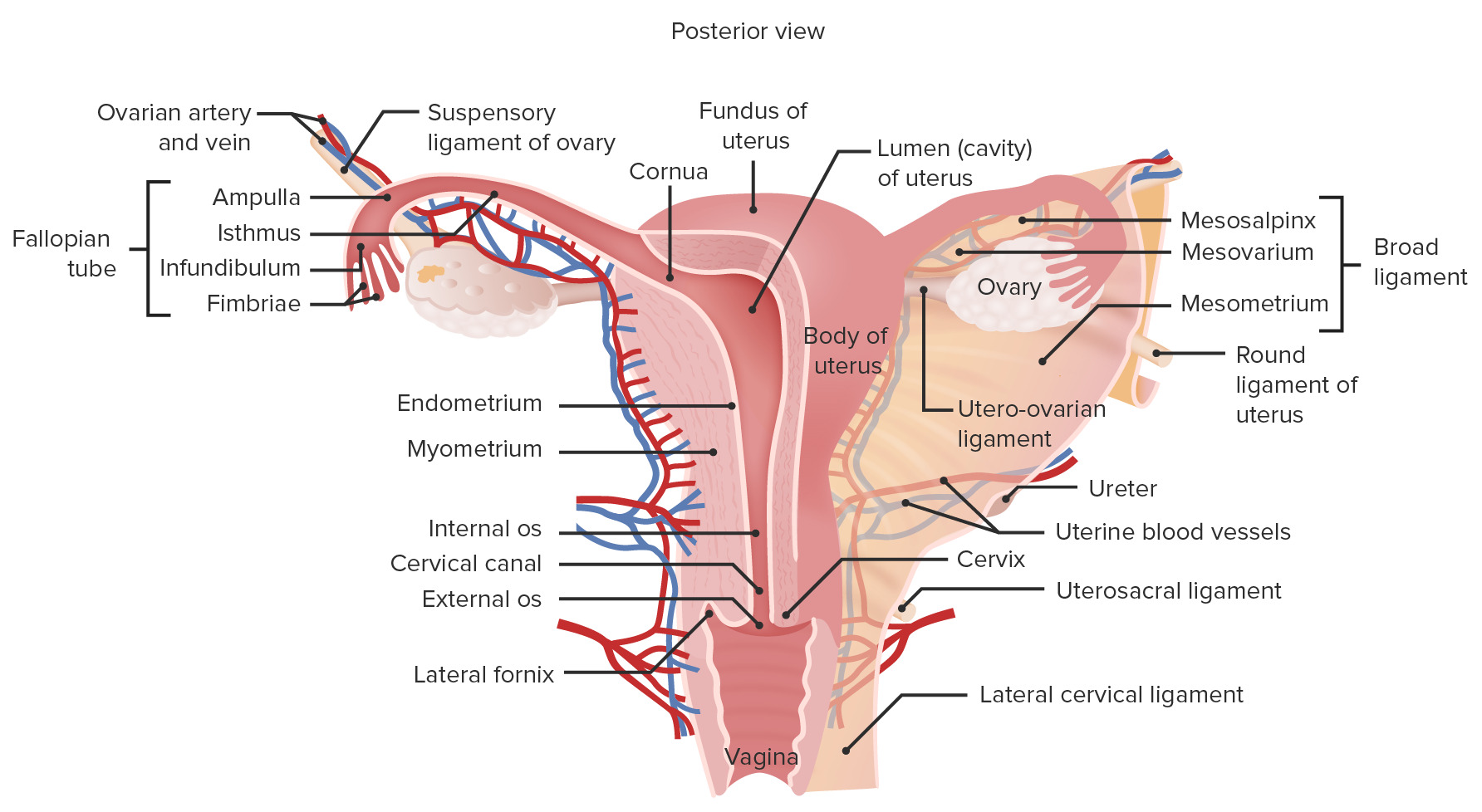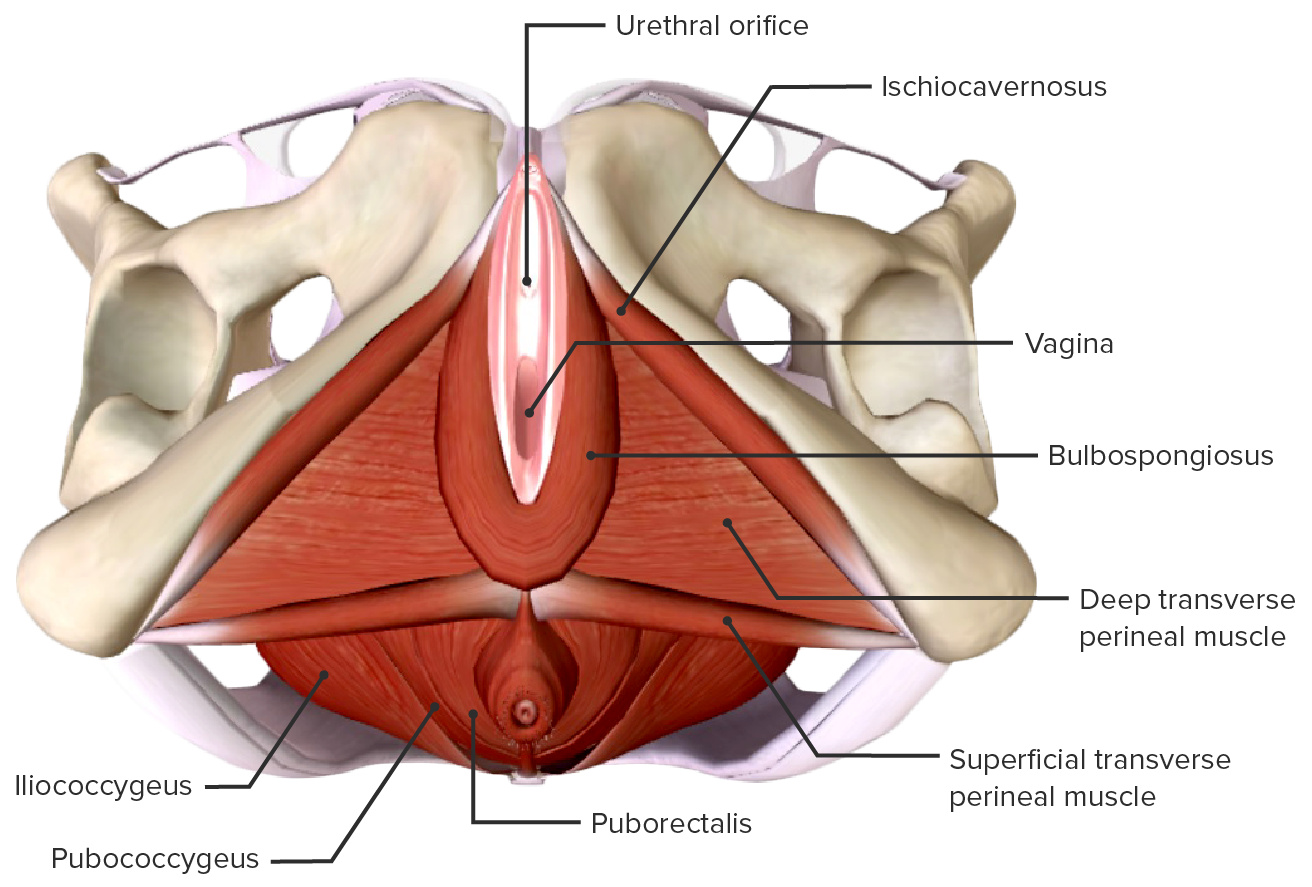Playlist
Show Playlist
Hide Playlist
Ovary: Primordial Follicle – Female Reproductive System
-
Slides Female reproductive system ovary.pdf
-
Reference List Histology.pdf
-
Download Lecture Overview
00:01 Well, here’s a histological section of a primordial follicle. It’s an oocyte, and the oocyte is surrounded by follicular cells. These cells were originally stromal cells recruited from the stroma in the cortex, and they wrap around the oocyte and they protect it. They are supporting cells. 00:28 And then those stromal cells, when the oocyte starts development, develop into what we call follicle cells. Well, these oocytes, these primordial follicles, as I mentioned earlier, are present at birth. In fact, about the third month of fetal life in the ovary, cells develop into oogonia, the germ cell. And these undergo massive mitotic activity. Until about the fifth month of fetal life, you could have five to seven million of these oogonia in the fetal ovary. They’re actually in the first meiotic division on their way to becoming haploid cells containing half the number of chromosomes and half the amount of DNA through the process of meiosis. But meiosis is not completed in these oogonia until adult life. 01:36 In fact, the final stage of meiosis is never completed unless the oocyte undergoes fertilization, which is very very rare. Now, of the five to seven million of these oogonia that develop, by the time the child is born, the female child, there are about 400 to 500 of these remaining. In other words, there’s a loss, an enormous loss of this during fetal development, until the only left at birth were 20% of these oogonia and oocytes. And that’s because those supporting cells I mentioned earlier around them in the fetal ovary die off. 02:25 They withdraw their support so the oogonia die. Now, of the 400,000 to 500,000 oocytes that are there at birth, you’re only going to have, in a normal reproductive lifespan of the female, about 400 eventually ovulating. The reproductive life of the female begins at about at an average age of 12.7 years. It’s called the menarche, and then menopause or the cessation of the reproductive life in the female is around the age of between 47 and perhaps 55 quite variable. But during that reproductive life, ovulation occurs once every 28 to 30 days as part of the ovarian cycle, part of the menstrual cycle that lasts, as I said, about 28 to 30 days. So there is this enormous attrition of these follicles, these oogonia, these oocytes. If we now look at primary growth of the follicle, it’s illustrated on this slide here, showing you two sections through the ovary, two sections showing you a primary follicle at various stages of its development. First of all, when a follicle changes from being a primordial follicle to a growing primary follicle, the stromal cells adapt a cuboidal type epithelium that you see on the left-hand image and labelled. 04:08 This is the time at which you now define that growing follicle as being a primary follicle. 04:15 If it has only got one layer, sometime it’s referred to as being a unilaminar primary follicle. If it has got many layers, such as the one on the right-hand side, many layers are often termed the membrane granulosa, then we often call them multilaminar primary follicle. 04:37 Notice the size of the oocyte. Even though these are taken at different magnifications, during this phase of development, the oocyte can change from being about 30 microns in diameter up to about 50 to then 80 microns in diameter. So there is enormous growth also of the oocyte. We often term the oocyte as being a primary oocyte. Not because it’s part of a primary follicle, but because it’s only in its first meiotic division stage. 05:11 It has not yet even completed its first meiotic division. And it won’t do so until ovulation if the follicle ever gets to the stage of ovulation. Now, what happens during this stage is that when these primary follicles develop, they have this single layer, then they do that independent of the gonadotropins from the pituitary. But then when they get to a certain stage, they’re dependent on follicle stimulating hormone coming out from the anterior pituitary gland. And that follicle stimulating hormone causes these granulosa cells, that they are now called, to multiply, to massively divide. And as they divide, they give rise to the membranic granulosa you see there, multi-layers of these granulosa cells. 06:13 And those cells also, under the influence of FSH, produce estrogens. Now, if you look very carefully at the capsule around the multilaminar follicle shown in this slide, you can just make out sort of a capsule, a bit of tissue wrapping around the cell, the follicle. That’s called the theca interna and the theca externa layers. Unfortunately, in a lot of histological sections, you don’t see details of these separate layers. But as I mentioned at the very start, the theca externa is a connective tissue capsule. The theca interna is a capsule that is very vascular. 07:02 And as development starts, as these follicles begin to secrete estrogens in response to FSH, they only do so because the theca interna cells, the internal ones that are around the follicle, they become steroidogenic as well. They develop little lipid droplets inside them, cholesterol droplets that are the precursor for making steroid hormones. 07:35 And this theca interna layer, under the influence of luteinizing hormone, or LH, synthesize androgens. And those androgens pass across the basal lamina separating the membrana granulosa from the theca layers. And those androgens are then used by the granulosa cells to make estrogens because they don’t have the enzymes to produce estrogens from the very precursor products. So there is this combination between the theca interna and the granulosa layers. 08:16 One provides the androgens, and the other then using those to convert those androgens to estrogens. And as the follicle grows, then more estrogens produced. And therefore, during the follicular phase of the ovary cycle, estrogens will increase their levels in the blood. 08:42 Also, you can see in the image, in the picture on the right-hand side, a shell around the oocyte. 08:48 It’s the zona pellucida. It’s homogenous stained, very brightly stained covering around the oocyte. That zona pellucida is going to persist right through until after ovulation. 09:04 It’s a very important structure that protects the oocyte, but also has some very very important proteins within it. One of them is the attachment site or the attachment protein for sperm. 09:22 When sperm finally get to try to fertilize the egg, they attach to these proteins on the surface. And then another component in the zona pellucida induces the acrosome reaction. 09:36 The reaction whereby the sperm can create, secrete the enzymes required to then penetrate through the zona pellucida, and then access the egg to fertilize that egg. It’s a very prominent structure as you see here. The follicular theca you see there, the theca folliculi it’s called, it’s reversed the name sometimes, that’s the term that you often might see, and it refers to really the theca interna and externa layer that I described a few moments ago.
About the Lecture
The lecture Ovary: Primordial Follicle – Female Reproductive System by Geoffrey Meyer, PhD is from the course Reproductive Histology.
Included Quiz Questions
Which of the following statements regarding the zona pellucida is INCORRECT?
- It produces the corona radiata.
- The zona pellucida binds spermatozoa.
- It is required to initiate the acrosome reaction.
- It surrounds the plasma membrane of the oocyte.
- It is surrounded by the corona radiata.
When do oogonia develop during pregnancy?
- First trimester
- Early in the second trimester
- Late in the second trimester
- Early in the third trimester
- Late in the third trimester
What is the shape of the cells of the granulosa cells?
- Cuboidal
- Squamous
- Traingular
- Oval
- Spiral
What is the average follicular growth rate per day?
- 1-3 mm
- 4-6 mm
- 7-9 mm
- 9-11 mm
- 12-14 mm
Which of the following immediately surrounds a primary oocyte?
- Granulosa cells
- Mast cells
- Theca externa
- Antrum
- Theca interna
Which ONE of the following is INCORRECT?
- The zona pellucida surrounds the corona radiata.
- Theca lutein cells in the corpus luteum are derived from theca interna cells.
- Granulosa lutein cells secrete increasing amounts of progesterone along with some estrogen.
- The corpus albicans is the regressed form of the corpus luteum.
- The final stage of meiosis is never completed unless the oocyte undergoes fertilization.
Customer reviews
5,0 of 5 stars
| 5 Stars |
|
5 |
| 4 Stars |
|
0 |
| 3 Stars |
|
0 |
| 2 Stars |
|
0 |
| 1 Star |
|
0 |






